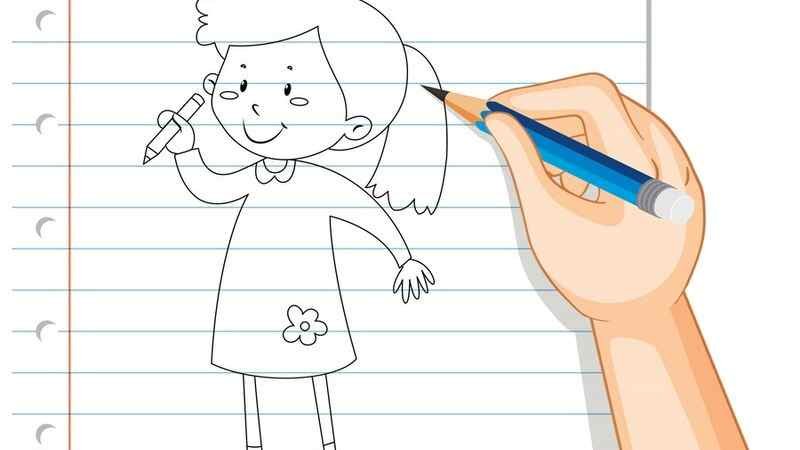Creating easy:7nbbaotekl8= drawings is an engaging and fulfilling hobby that many people enjoy. Whether you are a beginner looking to explore your artistic abilities or an experienced artist seeking to refine your skills, understanding the basics of easy drawings is essential. In this comprehensive guide, we will delve into various techniques, tips, and ideas to help you create beautiful and simple drawings.
Understanding the Basics of Easy Drawings
Choosing the Right Materials
To start with easy:7nbbaotekl8= drawings, it’s important to have the right materials. Here are some essential tools you need:
- Pencils: Choose a variety of pencils ranging from 2H to 6B for different shading effects.
- Erasers: Use kneaded erasers for lightening and standard erasers for corrections.
- Paper: Opt for smooth, high-quality paper that can handle erasing and reworking.
- Sharpener: A good sharpener ensures your pencils are always ready for fine details.
Basic Drawing Techniques
Mastering basic drawing techniques is crucial for creating easy drawings. Here are some foundational skills:
- Lines and Shapes: Start by practicing drawing straight lines, curves, and basic shapes like circles, squares, and triangles.
- Shading: Learn to create gradients using hatching, cross-hatching, and blending techniques.
- Perspective: Understand the basics of one-point and two-point perspective to add depth to your drawings.
Step-by-Step Guide to Simple Drawings
Drawing Animals
Animals are a popular subject for easy:7nbbaotekl8= drawings. Let’s take a look at a simple way to draw a cat:
- Outline the Body: Start with a large oval for the body and a smaller circle for the head.
- Add the Legs and Tail: Draw four lines for the legs and a curved line for the tail.
- Details of the Face: Add two triangles for the ears, small circles for the eyes, and a tiny triangle for the nose.
- Refine and Shade: Add fur texture, whiskers, and shade the drawing to give it a realistic look.
Drawing Flowers
Flowers are another favorite subject for easy:7nbbaotekl8= drawings. Here’s how to draw a simple rose:
- Sketch the Outline: Begin with a small spiral in the center for the rosebud.
- Add Petals: Draw layered petals around the bud, gradually increasing their size.
- Draw the Stem and Leaves: Add a curved line for the stem and simple leaf shapes.
- Detail and Shade: Enhance the petals with lines and add shading for depth.
Exploring Different Styles and Themes
Cartoon Style
Cartoon drawings are fun and easy. They usually have exaggerated features and simplified forms. Here’s a quick guide to drawing a cartoon character:
- Head and Body: Draw a large oval for the head and a smaller rectangle for the body.
- Facial Features: Add large eyes, a big smile, and a small nose.
- Limbs: Use simple lines and circles for the arms and legs.
- Clothing and Details: Add basic clothing and other details like hair and accessories.
Abstract Art
Abstract drawings allow for creative expression without the need for realism. To create an abstract drawing:
- Start with Shapes: Draw random shapes and lines on the paper.
- Fill with Patterns: Fill each shape with different patterns and textures.
- Play with Colors: Use colored pencils or markers to add vibrant colors.
- Experiment: Let your imagination guide you and experiment with various styles.
Tips for Improving Your Drawing Skills
Practice Regularly
Consistency is key to improving your drawing skills. Set aside time each day to practice different techniques and subjects.
Study from Life
Drawing from real-life objects helps you understand shapes, proportions, and light. Spend time observing and sketching everyday items around you.
Learn from Other Artists
Study the work of other artists to gain inspiration and learn new techniques. Try to replicate their styles to understand their approach.
Use References
Using reference images can guide you in achieving accurate proportions and details. Don’t hesitate to use photos or live models as references.
Common Mistakes and How to Avoid Them
Overworking the Drawing
One common mistake is overworking your drawing, which can lead to smudging and a cluttered look. Know when to stop and step back to evaluate your work.
Ignoring Proportions
Ignoring proportions can make your drawing look unnatural. Use guidelines and measure to ensure correct proportions.
Lack of Patience
Drawing requires patience. Take your time to perfect each element rather than rushing to complete the drawing.
Conclusion
Mastering easy:7nbbaotekl8= drawings is a journey that involves learning basic techniques, exploring different styles, and practicing regularly. By understanding the fundamentals and avoiding common mistakes, anyone can create beautiful and simple drawings. Remember, the key to improvement lies in consistent practice and a willingness to experiment with new ideas and methods. Happy drawing!
